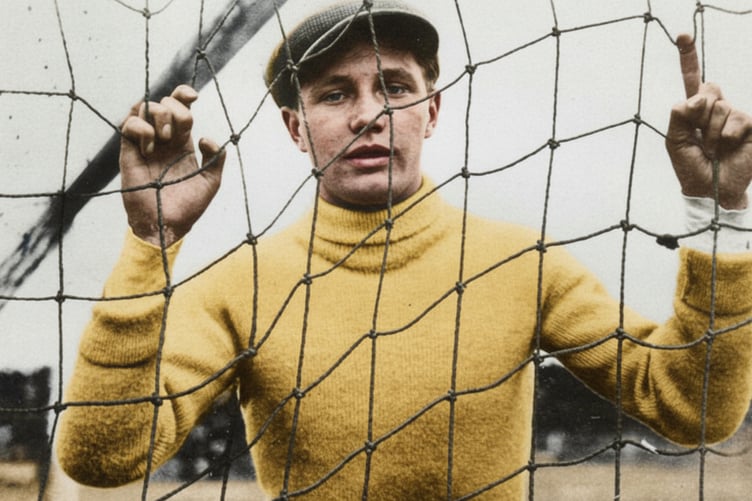Aberystwyth was once home to a Wales captain who redefined goalkeeping.
Many won’t know Leigh Roose, who saved goals before saving lives in the Battle of the Somme.
These stories are being brought to life with a new blog by Aberystwyth historian Mike Evans.
Across October, Facebook Page the Lost Voices of Aberystwyth has connected 80,000 readers to forgotten WWI soldiers.
For the Cambrian News, Mike tells the story of a celebrated sportsman, charming bachelor, and national hero.
Leigh Richmond Roose, 1877-1916
Roose was like a person out of an Edwardian novel.
Born in Wrexham on 27 November 1877, he studied medicine at Aberystwyth University.
It was here that people noticed how good he was in goal.
Back then, goalkeepers stood on their line and waited for the ball to come to them. Roose changed all that.
He was way ahead of his time—an early version of a "sweeper-keeper."

He'd charge out to cut off passes and tackle head-on.
Making his name at Aberystwyth Town and London Welsh, Stoke signed him in 1904 where he really became famous.
Crowds flocked to watch him play for his athleticism and showmanship. He went on to play for Everton and Sunderland where he became a legend.
He also won 24 caps for Wales, captaining the national team, becoming one of the best players of his era.
Roose was tall, good-looking, a well-known London figure, described as "bachelor" and "physician"—though he never finished his medical degree.
When war broke out in 1914, Roose was 36. Like so many of his generation, he felt compelled to serve.
He joined the Royal Army Medical Corps, using his medical training in French hospitals and the ill-fated Gallipoli campaign.
But the non-combat role didn't suit him, wanting to be on the front line.
He enlisted in the 9th (Service) Battalion of the Royal Fusiliers in 1916.
Roose found himself thrown into the deadliest battle in British history: the Battle of the Somme.
In August 1916, during brutal fighting near Pozieres, Roose's trench came under heavy bombardment.
The official citation for his Military Medal (MM) notes “he showed great coolness and bravery in the field… Although wounded, he continued to throw bombs until the enemy was beaten off."
For hours on end, he used the powerful arm that once hurled footballs to throw grenades at advancing Germans.
He even carried a wounded comrade to safety under intense shellfire. The goalkeeper who had saved goals was now saving lives.

But his heroism couldn't protect him from the Somme’s relentless slaughter.
On 7 October 1916, Roose's battalion launched an attack on German positions near Gueudecourt, the Battle of Le Transloy.
Roose was seen charging toward the enemy line.
Survivors say he was last seen firing his rifle as he ran into a storm of machine-gun fire. Like so many of his comrades, his body was never found.
Roose was 38. He has no known grave.
Sponsor the project to support local veterans - to donate, contact Mike on Facebook - https://www.facebook.com/TheLostVoicesofAberystwyth





Comments
This article has no comments yet. Be the first to leave a comment.